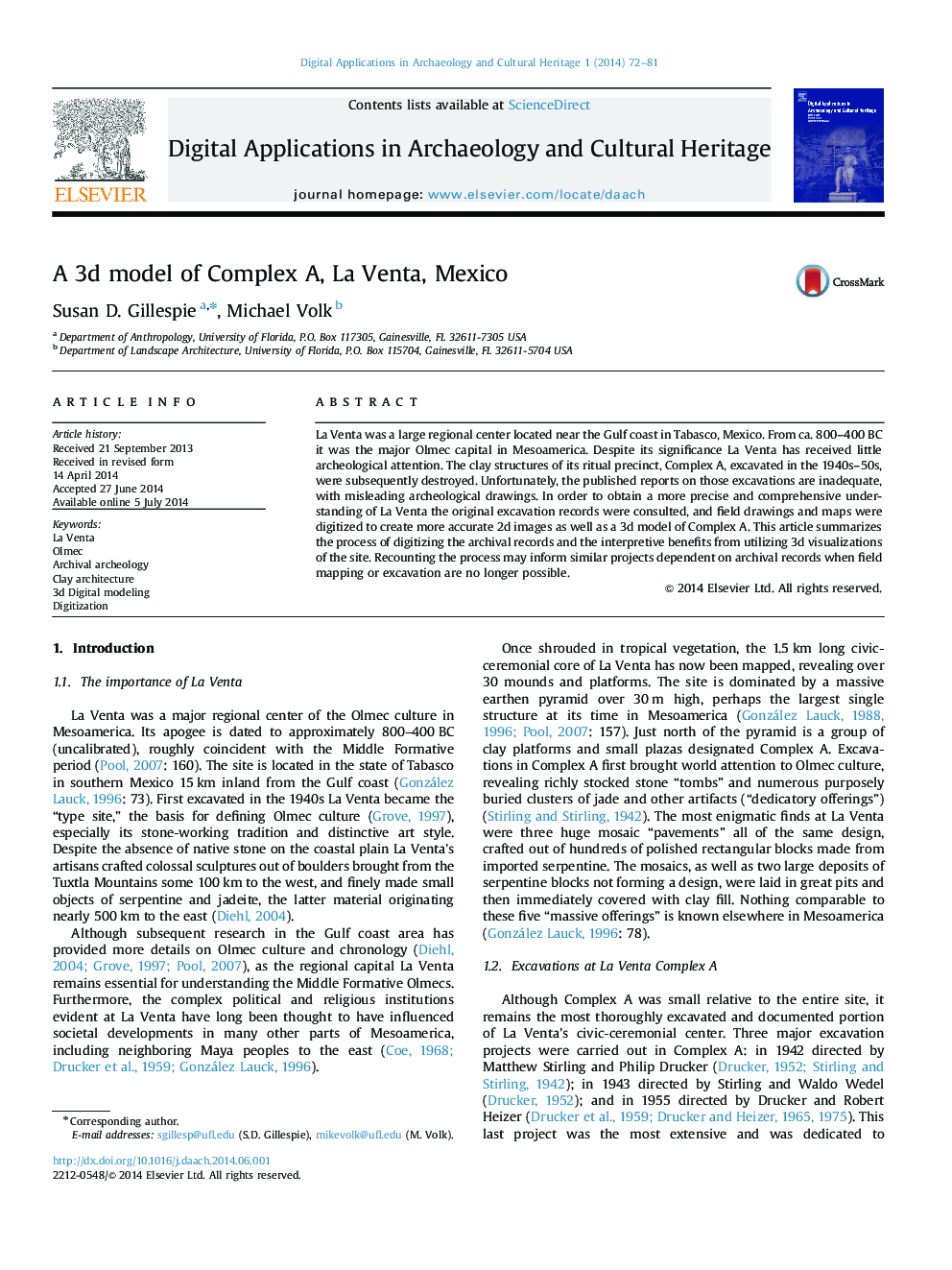| Article ID | Journal | Published Year | Pages | File Type |
|---|---|---|---|---|
| 108027 | Digital Applications in Archaeology and Cultural Heritage | 2014 | 10 Pages |
•The importance of La Venta and its ritual precinct, Complex A, is briefly described.•We explain how the archived field records of La Venta Complex A were digitized.•We explain how the digitized data were developed into a 3d model of the site.•Problems and successes in the digitization of archival records are discussed.•New interpretations of Complex A׳s history and design derive from the 3d model.
La Venta was a large regional center located near the Gulf coast in Tabasco, Mexico. From ca. 800–400 BC it was the major Olmec capital in Mesoamerica. Despite its significance La Venta has received little archeological attention. The clay structures of its ritual precinct, Complex A, excavated in the 1940s–50s, were subsequently destroyed. Unfortunately, the published reports on those excavations are inadequate, with misleading archeological drawings. In order to obtain a more precise and comprehensive understanding of La Venta the original excavation records were consulted, and field drawings and maps were digitized to create more accurate 2d images as well as a 3d model of Complex A. This article summarizes the process of digitizing the archival records and the interpretive benefits from utilizing 3d visualizations of the site. Recounting the process may inform similar projects dependent on archival records when field mapping or excavation are no longer possible.
Graphical abstractFigure optionsDownload full-size imageDownload as PowerPoint slide
